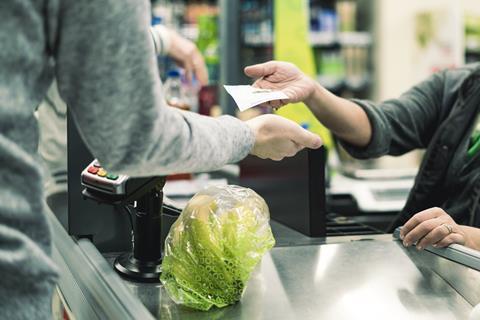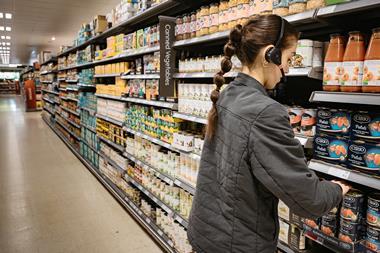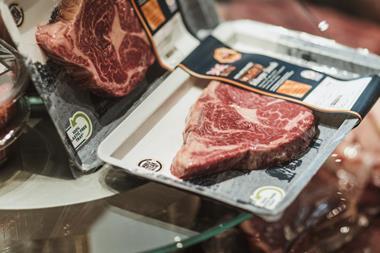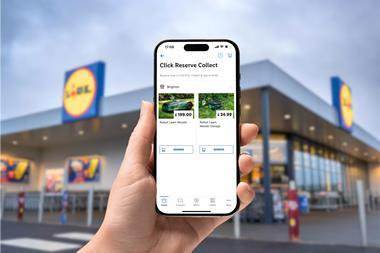
There is inflation, and there is the reality of inflation. In other words, there are the official numbers representing inflation as we have come to know it, and the numbers that reflect our individual lived realities. The two should not be conflated.
The official Consumer Price Index numbers, released by the Office for National Statistics for September, show the UK running at 10.1% annually, returning us to the highest level in 40 years. The Bank of England predicts a possible high of 13% before the end of the year.
Grocery price inflation has hit 14.7%, the highest level since Kantar first started tracking the data in 2008, and it shows no signs of slowing. Products like butter, milk and poultry are seeing some of the biggest jumps.
This rise means the average annual shop is set to increase by a staggering £643 to £5,265. At a basket level, that means the average shopping trip will now cost £3.04 more versus last year unless consumers change what they buy or where they shop.
Consumers are understandably concerned. When we ask questions of Kantar’s household panel, rising concerns about the cost of groceries (90% of people) is only marginally behind the number of people concerned with rising energy costs (95% of people)
But our own personal inflation rate will usually be higher or lower than the headline figure. We see these differences because, as consumers, we make choices to help ourselves mitigate inflation – we buy cheaper products or services, or in some cases, stop buying them altogether.
Late last year, we identified three spending cohorts, called ‘pressure groups’. Each cohort description reflects where they see themselves on the spending spectrum. The first group are those who consider themselves ‘comfortable’; the second is ‘managing’; the third is ‘struggling’.
The less affluent tend to be most negatively affected because they’re already likely to have been focused on finding better deals to stretch their household budgets. Consequently, they have limited opportunities to find even more ways to reduce costs, particularly as staples such as bread and pasta continue to rise.
As 2022 played out, there has been no let-up in the declining circumstances of consumers, which has resulted in more falling into this ‘struggling’ cohort. In the five months to April, we went from almost half of the population saying they were comfortable to just one-third – a meaningful and rapid shift from a place of confidence and security to one of reticence and insecurity. By July, the struggling group had grown a further 2%. By October, a further 2% were struggling and, tellingly, even the comfortable group fell 4%.
If the dark months of Covid-19 taught us anything, it’s that attitudinal changes are more critical than ever to understand. ‘Canaries in the coalmine’, such as these indicative cohorts, enable more decisions to be made with confidence.
Instincts and assumptions alone are a dangerous thing in our current fiscal climate. For example, it would be easy to assume only the less affluent will be hit. And while there is a clear correlation between household income and the extent to which a household considers itself to be ‘struggling’, it is not that simple. Even among those earning £40,000-£49,000, 17% feel the strain financially, while only 45% of those earning £50,000-£59,000 claim to be ‘comfortable’.
And there’s the rub. People are people, and when they’re feeling broke, they’re feeling broke. So, what to do?
Counting what counts would be a start. Housing costs? Sure. Energy? Sure. Interest rates are interesting, but they won’t make or break many budgets as they edge slightly higher. At the same time, we should recognise none of these costs are particularly controllable on a daily basis.
People are not managing inflation. If anything, inflation is managing them. What they are really doing is mitigating risk. Their decisions around what they buy, how often, for how much, and in what size become daily exercises in risk management.
People didn’t need the Bank of England to issue this rather obvious statement in May before taking action: “If prices go up but your income stays the same as it was a year ago, you’ll notice it won’t go as far as it did then.”
As our data shows, they have been adjusting to this reality for many months. We look at grocery inflation through a lens of 75,000 identical products compared year on year in the proportions purchased by shoppers. It is a “pure” grocery inflation measure in that shopping behaviour is held constant between the two comparison periods – shoppers are likely to achieve a lower personal inflation rate if they trade down or seek more offers.
The through-line of tension here is the danger of a race to the bottom on price as brands race to compete with own label and an ongoing shift to discounters (Lidl and Aldi have both seen significant jumps in market share in recent months).
The other risk – and this one is for brands – is inertia. When market conditions are swirling, some default to waiting it out in the hope all will become clear when the dust settles. The past has taught us this is rarely the reality. You can’t steer a parked car.
Brands that run towards relevance, becoming essential purchases despite price, not bought with only a thought of price in mind, will be those that profitably endure.



















No comments yet